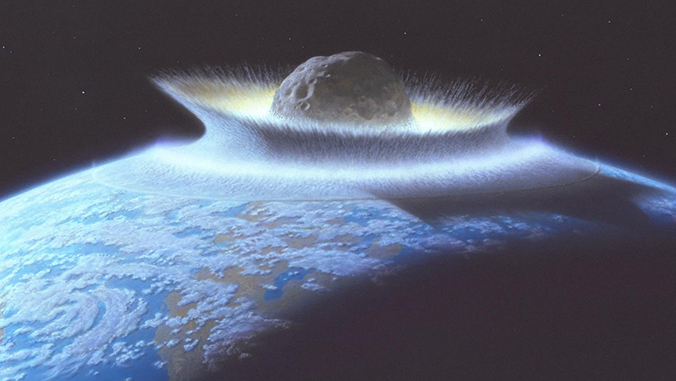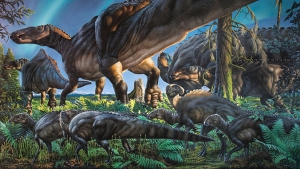
Volcanic activity did not play a direct role in the mass extinction event that killed the dinosaurs, according to a recently published study by an international team of 36 scientists, including Greg Ravizza of the University of Hawaiʻi at Mānoa Department of Earth Sciences.
In a break from a number of other recent studies, the team, led by Yale assistant professor Pincelli Hull, argues that environmental impacts from massive volcanic eruptions in India in the region known as the Deccan Traps happened well before the Cretaceous-Paleogene (K-Pg) extinction event 66 million years ago and therefore did not contribute to the mass extinction. Their study was published in Science.

Most scientists acknowledge that the K-Pg mass extinction event occurred after an asteroid slammed into Earth. Some researchers also have focused on the role of volcanoes in the K-Pg extinction due to indications that volcanic activity happened around the same time.
“Volcanoes can drive mass extinctions because they release lots of gases, like sulfur dioxide (SO2) and carbon dioxide (CO2), that can alter the climate and acidify the world,” said Hull. “But recent work has focused on the timing of lava eruption rather than gas release.”
To pinpoint the timing of volcanic gas emission, the team compared global temperature change and the carbon isotopes (an isotope is an atom with a higher or lower number of neutrons than normal) from marine fossils with models of the climatic effect of CO2 release. The model results indicate that most of the gas release happened well before the asteroid impact—and that the asteroid was the sole driver of extinction.
Although the team found volcanic activity in the late Cretaceous caused a gradual global warming event of about two degrees, it did not cause mass extinction.
Ravizza was excited by the results. “I have participated in research related to the K-Pg boundary for more that 20 years. For a long time, I’ve been frustrated that many view this late Cretaceous warming and the K-Pg extinction, that occurred some 200,000 years later, as related phenomena; both caused by eruption of the Deccan Traps. In my opinion, the modeling results really undermine recent assertions that the abrupt extinction at the K-Pg boundary was a consequence of volcanic degassing.”
“A lot of people have speculated that volcanoes mattered to K-Pg, and we’re saying, ‘No, they didn’t,’” Hull said.
The International Ocean Discovery Program, the National Science Foundation and Yale University helped fund the research.
Portions of this content courtesy of Yale University.
—By Marcie Grabowski

